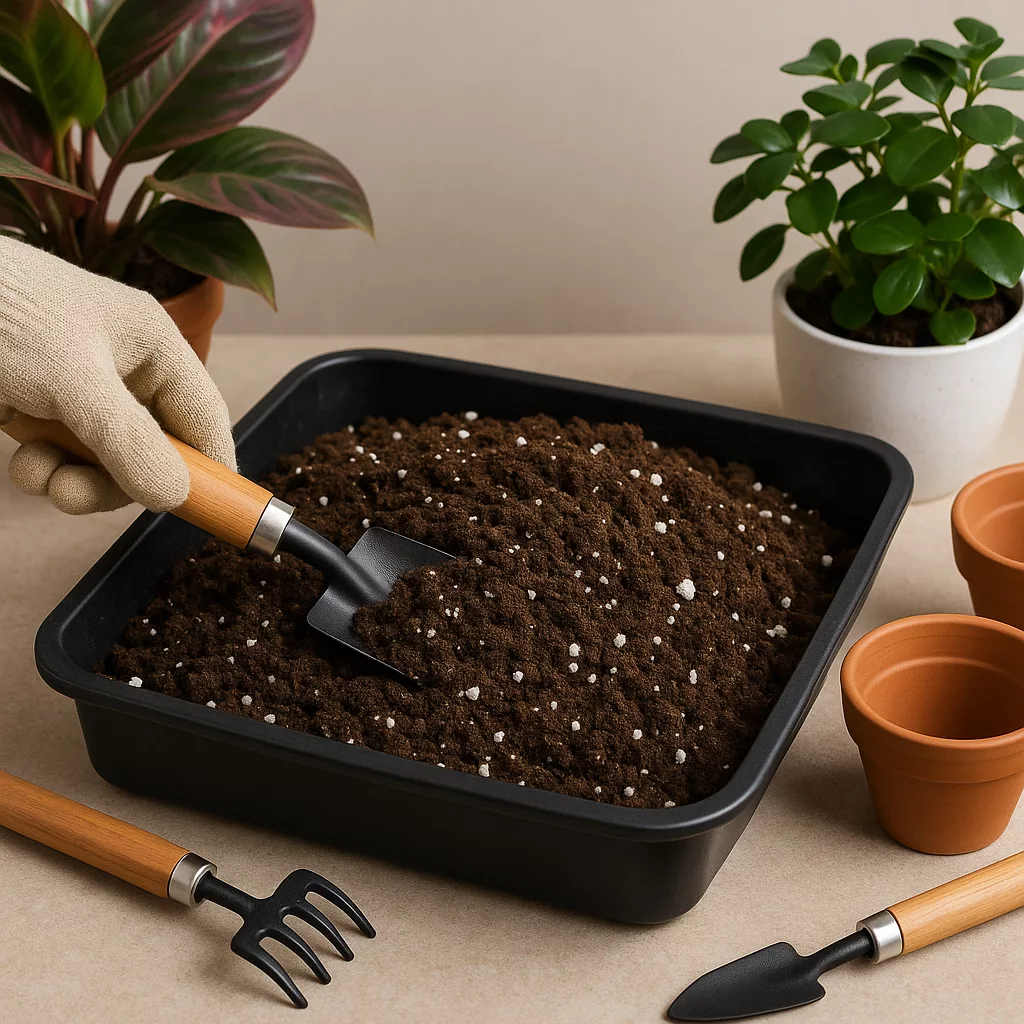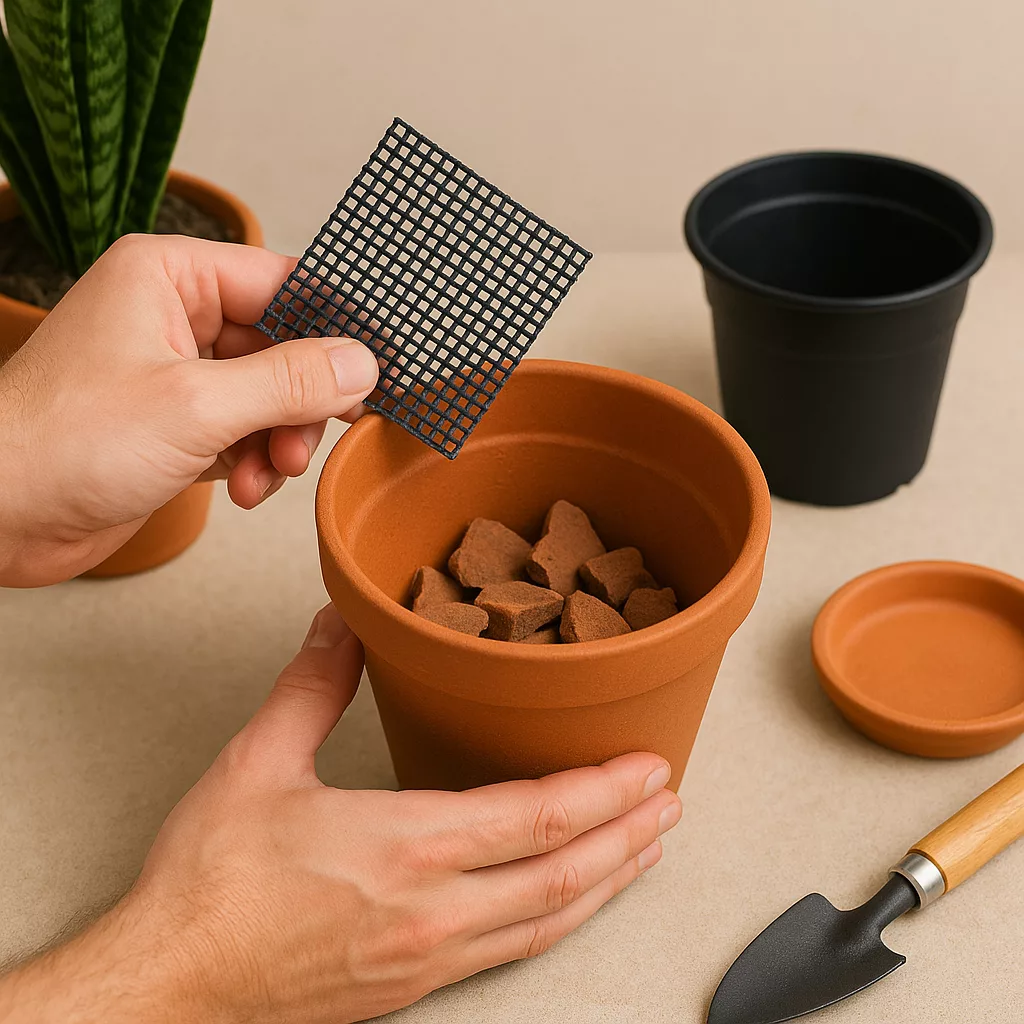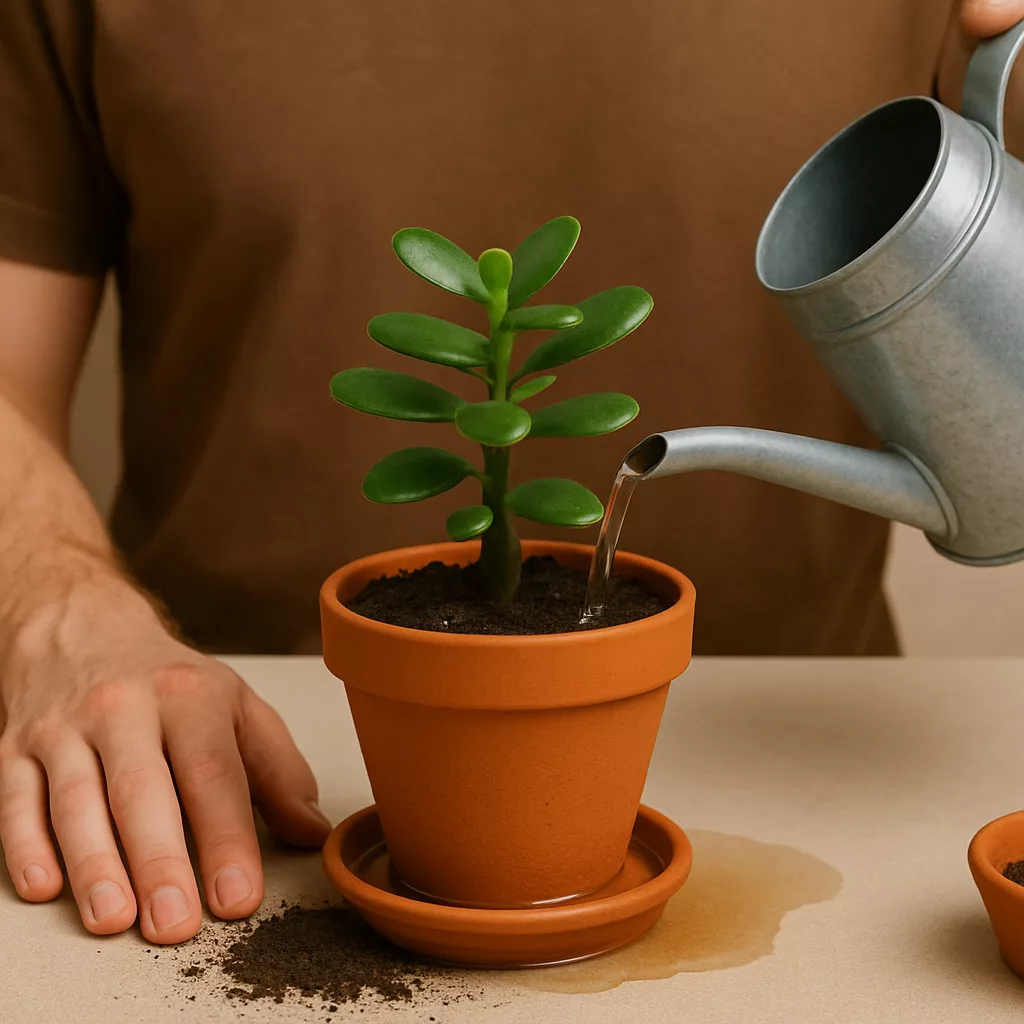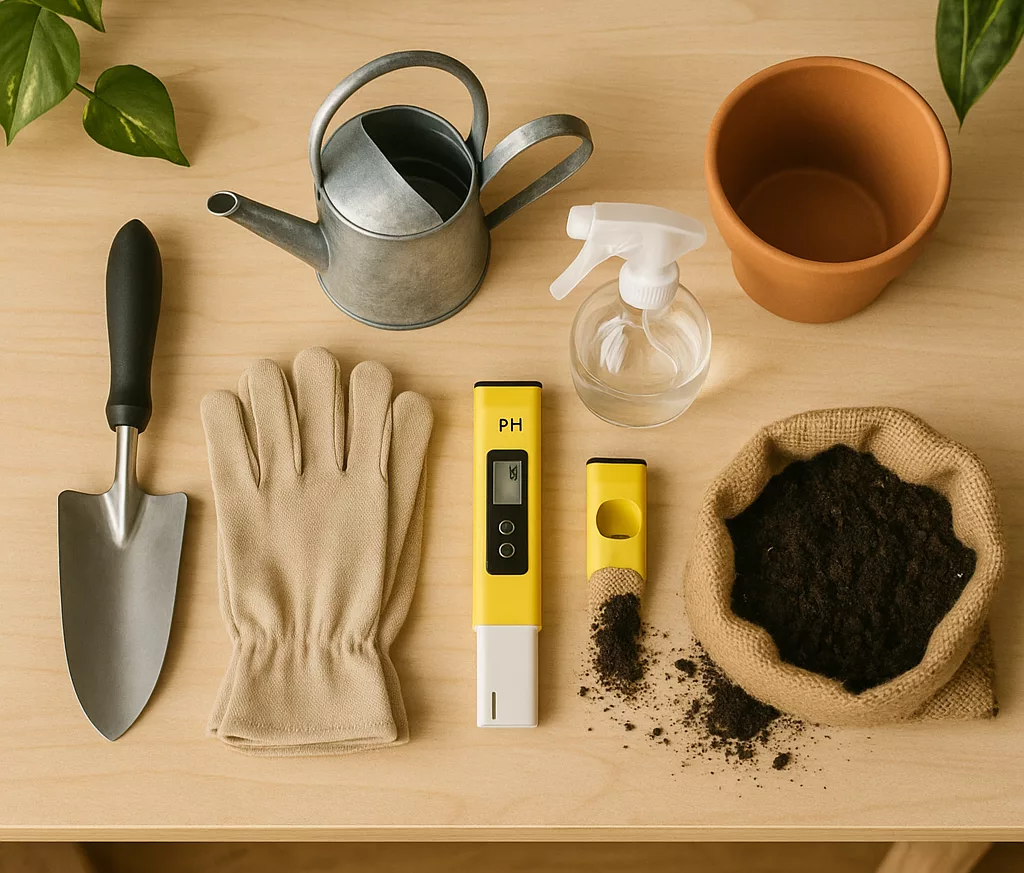Introduction
Best potting soil for indoor gardening is the foundation for vibrant, healthy indoor plants. The right mix ensures proper drainage, nutrient availability, and root health. In this complete guide, we’ll cover everything from essential components to DIY soil recipes and expert tips for container drainage.
Why Choosing the Best Potting Soil for Indoor Plants Matters
Your choice of potting soil affects everything:
- 🌿 Prevents overwatering and root rot through proper drainage.
- 🌱 Provides essential nutrients for plant growth.
- 💨 Improves airflow to roots, avoiding compaction.
- 🚫 Reduces risk of disease and pests, especially in indoor environments.

Healthy indoor gardening starts from the soil up!
🧪 1. What Makes the Ideal Potting Soil Mix?
Key Ingredients in the Best Potting Soil for Indoor Gardening
To ensure optimal indoor plant growth, look for a soil mix with:
- Peat moss or coconut coir – retains moisture without becoming soggy.
- Perlite or vermiculite – boosts drainage and aeration.
- Organic compost or worm castings – adds rich nutrients.
- Coarse sand or gravel – improves structure for cacti or succulents.
Peat Moss vs. Coconut Coir
- Coconut coir is sustainable, decomposes slowly, and holds just enough water.
- Peat moss holds more moisture but is less eco-friendly due to harvesting practices.
Pro Tip: Aim for a light, fluffy texture that doesn’t compact over time.
💧 2. Indoor Plant Container Drainage Tips
Good potting soil works best with smart drainage practices. Here are must-know indoor plant container drainage tips:
- ✅ Always choose pots with drainage holes.
- ✅ Add a bottom layer of small rocks or broken pottery.
- ✅ Place a mesh screen over the hole to prevent clogging.
- ✅ Elevate containers slightly using cork or rubber stands.

Even the best potting soil for indoor gardening can fail if the pot traps excess water.
⚠️ 3. Common Mistakes to Avoid
Don’t sabotage your plants by making these common soil mistakes:
- ❌ Using garden soil — too dense and may contain pests or weed seeds.
- ❌ Choosing a mix without checking pH levels — most indoor plants prefer 5.5 to 7.
- ❌ Ignoring aeration — compacted soil suffocates roots.
- ❌ Reusing old, exhausted soil — often depleted of nutrients.

Quick Fix: Refresh your potting mix every 12–18 months to keep it healthy.
🧤 4. How to Make Your Own DIY Potting Soil
Simple DIY Soil Mix Recipe for Indoor Plants
You can easily make your own best potting soil for indoor gardening using:
- 40% coconut coir or peat moss
- 30% organic compost (well-aged)
- 20% perlite
- 10% coarse sand (especially for succulents or herbs)
Step-by-Step Instructions:
- Sterilize coir or moss by soaking in hot water.
- Combine ingredients thoroughly in a large bin.
- Moisten slightly — it should feel damp, not wet.
- Let the mix sit overnight before use.
This blend ensures great structure, moisture retention, and drainage.
♻️ 5. Use Recycled Containers for Indoor Gardening
Reusing materials can make your indoor garden more eco-friendly and creative. Check out these recycled containers for indoor garden projects:
- 🎍 Old mugs and teacups (with added drainage holes)
- 🍯 Mason jars with gravel bases
- 🥫 Upcycled tin cans, painted and drilled
- 🍶 Plastic bottles cut and inverted for self-watering planters
Note: Pair these with your best potting soil for indoor gardening for stunning and sustainable results.
Explore more ideas on how to start an indoor garden for beginners.
🧰 6. Must-Have Tools for Indoor Gardening
To get the most out of your soil and setup, keep these tools on hand:
- 🌾 Trowel and gloves
- 💧 Watering can (premium desing) or spray bottle
- 📏 Soil pH and moisture meter
- 🪴 Planters and saucers
- 🌿 Organic fertilizer (liquid or slow-release) Check our Guide about the best indoor plant fertilizers for beginners

Having the right gear makes maintenance easier and your results better.
❓ 7. Frequently Asked Questions (FAQ)
How often should I replace indoor potting soil?
Every 12–18 months, or sooner if it becomes compacted or drains poorly.
Can I use garden soil indoors?
No. It’s too dense and can bring in insects or pathogens.
What’s the ideal pH level?
Between 5.5 and 7. Most houseplants thrive in this slightly acidic to neutral range.
What if my pot has no drainage holes?
Consider double potting — use a plastic insert with holes inside a decorative container.
🔗 Helpful Resources
- ✅ DIY Indoor Garden for Beginners
- ✅ How to Use Recycled Containers Effectively
- ✅ How to Repot Indoor Plants Without Killing Them
- ✅ The Spruce Guide to Potting Mixes
Explore more authoritative insights at Gardening Know How — one of the most trusted sources for home gardeners.
🌱 Conclusion
Choosing the best potting soil for indoor gardening is the secret to plant success. With the right mix of ingredients, proper drainage, and eco-conscious containers, your indoor garden will flourish in no time.
So grab your gloves, mix your soil, and repot those plants — your thriving indoor oasis is just a few steps away.
Start your indoor garden today and let your green space grow beautifully! 🌿
